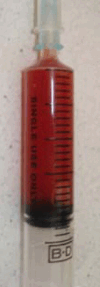Pleural effusion in the cat: a practical approach to determining aetiology
- PMID: 20800210
- PMCID: PMC11148994
- DOI: 10.1016/j.jfms.2010.07.013
Pleural effusion in the cat: a practical approach to determining aetiology
Abstract
Practical relevance: Diverse disease processes result in sufficient fluid accumulation within the pleural space to cause respiratory compromise. Determining the underlying aetiology is key to appropriate management. This review outlines a practical approach to cases of pleural effusion, focusing on early recognition and confirmation of pleural space disease, stabilisation of the patient and logical diagnostic investigation. It emphasises the importance of a holistic approach, incorporating fluid analysis with other clinical data to determine the underlying aetiology.
Clinical challenges: Cats with pleural effusion often have severe respiratory compromise at presentation. Careful handling and prompt and adequate stabilisation, incorporating supplemental oxygen and therapeutic thoracocentesis, is essential to avoid respiratory failure. The typical, stepwise approach to the case must be adapted and the clinician may have to proceed, at least initially, without the luxury of information gained from a full history and physical examination. The challenge is to juggle stabilisation, localisation and confirmation of pleural effusion, owner communication and minimally invasive examination while remaining vigilant for clues that allow ranking of the differentials to formulate a diagnostic plan.
Evidence base: Appropriately designed studies to determine the utility of diagnostic techniques in cases with confirmed aetiology are limited. The evidence supporting this review is grade II, III and IV, comprising a small number of prospective studies, several case series, reviews, extrapolation from other species, pathophysiological justification and combined clinical experience of those working in the field.
Copyright 2010 ISFM and AAFP. Published by Elsevier Ltd. All rights reserved.
Figures














Comment in
-
Diagnostic aids for pleural effusion in the cat.J Feline Med Surg. 2010 Nov;12(11):882; author reply 882. doi: 10.1016/j.jfms.2010.10.001. J Feline Med Surg. 2010. PMID: 20974407 Free PMC article. No abstract available.
References
-
- McLaughlin R, Canada RO, Tyler WS. A study of the subgross pulmonary anatomy in various mammals. Am J Anat 1961; 108: 149–65.
-
- Padrid P. Canine and feline pleural disease. Vet Clin North Am Small Anim Pract 2000; 30: 1295–307. - PubMed
-
- Light RW. Pleural diseases. 5th edn. Philadelphia: Lippincott Williams & Wilkins, 2007.
-
- Creighton SR, Wilkins RJ. Thoracic effusions in the cat. J Am Anim Hosp Assoc 1975; 11: 66–76.
-
- Gruffydd-Jones TJ, Flecknell PA. The prognosis and treatment related to the gross appearance and laboratory characteristics of pathological thoracic fluids in the cat. J Small Anim Pract 1978; 19: 315–28. - PubMed
Publication types
MeSH terms
LinkOut - more resources
Full Text Sources
Miscellaneous

